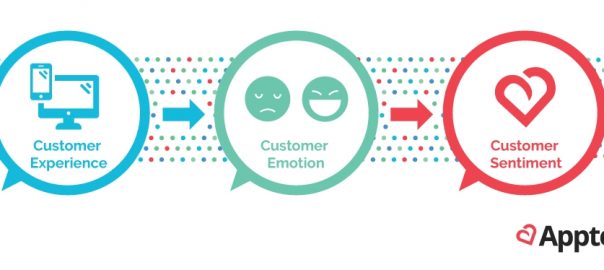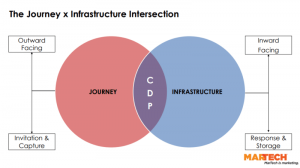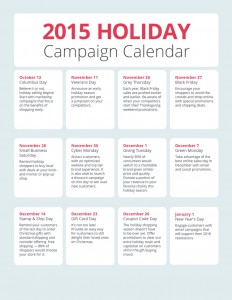“Digital transformation” is the buzzword du jour – and for good reason. Globally, brands are scrambling to figure out what the “new normal” means for customer engagement. Product and marketing leaders are faced with high levels of fear and uncertainty, oftentimes accompanied by slashed budgets. And consumers are engaging with brands in new ways, building new patterns, preferences, and loyalties.
But, consumers are people after all. And as people, we’re having a tough time. Whether it’s not seeing friends and family, struggling with our health or dealing with sudden unemployment, our lives are a lot more stressful and complicated than they were just six months ago. We are, as humans, emotional beings.
This is why now is the time to lean into customer sentiment and feedback initiatives. The uncertainty of the world shouldn’t be paralyzing your brand; it should be igniting a fire to better understand customers’ needs.

Why is customer emotion data so important right now?
The state of the world in 2020 has many of us experiencing a rollercoaster of emotions. And as consumers, these emotions drive us to make many of our decisions – including purchase decisions. When we experience emotion, chemicals are released in our brains that make us feel positively or negatively about what’s happening in front of us. Whether customers complete a purchase, leave a review, or mention your company socially, there is always an emotional state connected to their action.
Capturing and analyzing this emotion is at the heart of understanding, measuring, and improving customer relationships. And it’s the key to making informed decisions when thinking about digital transformation. Once you have this emotion data, you can evolve your business, product, or service to meet your customers’ needs right now.
What’s the difference between customer sentiment and customer emotion?
While customer emotion and customer sentiment are always connected, there some important differences:
- Emotions are raw while sentiment is organized. Depending on the context, emotion can be intense, quick, and reactionary. Sentiment, on the other hand, requires more time to think through.
- Emotions are quicker to change than sentiment. One event can trigger an emotion, whereas sentiment is based on how emotions surrounding a topic (in this case, your brand) change over time.
- Sentiment is typically measured positively or negatively; emotion allows for a wider range. Methods that measure on a flat scale, like NPS, are standard in gauging sentiment. However, these methods only tell a small part of the story. Measuring emotion data allows you to go deeper into specific feelings customers have, which can be as diverse as your customer base is.
It all starts with an experience. Customer experience is any interaction between a brand and a consumer throughout their business relationship. The number of potential interactions across digital and in-person touchpoints can be endless and look different for every brand.
TL;DR: Sentiment is the “what.” Emotion is the “why.” Measuring and acting on both is critical to customer experience success.
How do you collect and measure this data?
It can be hard to measure a feeling, but it starts by giving every customer a voice. Many brands today may think they build products around their customers based on feedback from a majority, but they couldn’t be further from the truth. In reality, our data shows that brands only hear from less than one percent of their customer base, which we call the “vocal minority.”
Here’s how to unlock this data from 99 percent of people you’re currently not hearing from:
- Determine who, where, and how often. Targeting based on customer action is essential to success in measuring customer emotion. If your mobile engagement points aren’t targeted and personalized based on customer behavior, you may as well not measure them at all.
- Focus on expressed sentiment. To capture customer emotion data, we look at expressed sentiment based on mobile actions and feedback. In measuring expressed sentiment, we segment customers into four categories:
- Fans Shifted to Risks: Customers whose expressed emotion has shifted from positive to negative, or from Fan to Risk.
- Risks Shifted to Fans: Customers whose expressed emotion has shifted from negative to positive, or from Risk to Fan.
- New or Repeat Fans: Customers who have expressed positive emotion for the first time by answering “Yes,” or who have expressed positive emotion at least twice in a row.
- New or Repeat Risks: Customers who have expressed negative emotion for the first time by answering “No,” or who have expressed negative emotion at least twice in a row.
- Quantify the “why” behind shifted sentiment – this is key. There are various reasons why expressed sentiment shifts. Shifted Fans are typically validation that you’ve improved your customer experience or made a positive change to your in-app experience. Shifted Risks are the opposite and tend to show that you’ve made a negative change to your offerings or customer experience that people aren’t happy with. As we said earlier, sentiment is the “what” and emotion is the “why.” Measuring and acting on both is critical to customer experience success.
What do you do with this data once you have it? And how does it tie to business results?
Experts suggest understanding customer emotion and customer sentiment is the key to unlocking customer experience over the next decade. Forrester recently reported that when it comes to stand-out customer experiences, leading brands rely on emotion to build loyalty.
Ultimately, this data is useful when brands make a connection between the shifted sentiment and what’s changed in their in-app experience or product offerings.
There are various reasons why expressed sentiment shifts. Shifted Fans are typically validation that you’ve improved your customer experience or made a positive change to your in-app experience. Shifted Risks are the opposite and tend to show that you’ve made a negative change to your offerings or customer experience that people aren’t happy with.
If a customer is consistent in their expressed sentiment, that also calls for a certain type of action. For example, if the customer is consistently a Fan who has not shifted, your brand’s job is to help turn them into advocates. Again, the converse is true: if the customer is consistently unhappy, your brand needs to take dramatic action to keep them as a customer or you are in danger of losing them to a competitor.
Our 2020 Mobile App Engagement Benchmark Report digs into industry standards for shifts in customer sentiment, shown below. Last year, the average number of New or Repeat Fans was 60% (iOS 58%, Android 65%). The average number of New or Repeat Risks was 31% (iOS 32%, Android 28%). How does your app compare?
With so much uncertainty in the world, many companies are paralyzed because they aren’t sure how to move forward with their customer sentiment and feedback initiatives. But deprioritizing customer sentiment and feedback is not the answer. It’s more important than ever as you build out your post-pandemic plan.
In our new reality, brands have a unique opportunity to be there for their customers by listening to feedback, reducing churn along the way. It’s easy to feel defeated by growing churn as consumers engage with brands from home, but you can get ahead of it. Customer behaviors will continue to evolve in the post-pandemic world, so it’s critical brands use this time now to adapt, plan, and create sustainable changes.
Digital & Social Articles on Business 2 Community
(62)
Report Post







